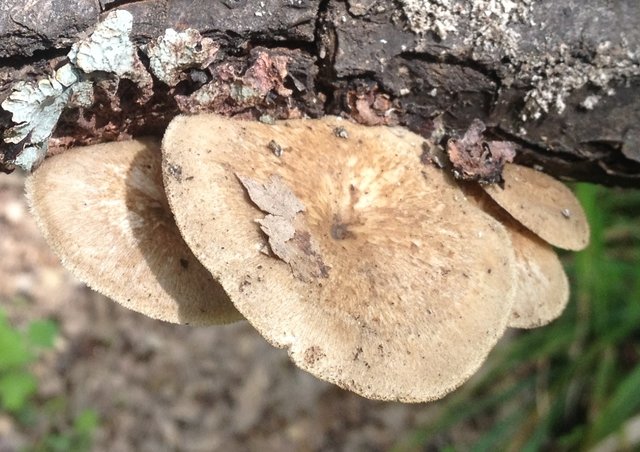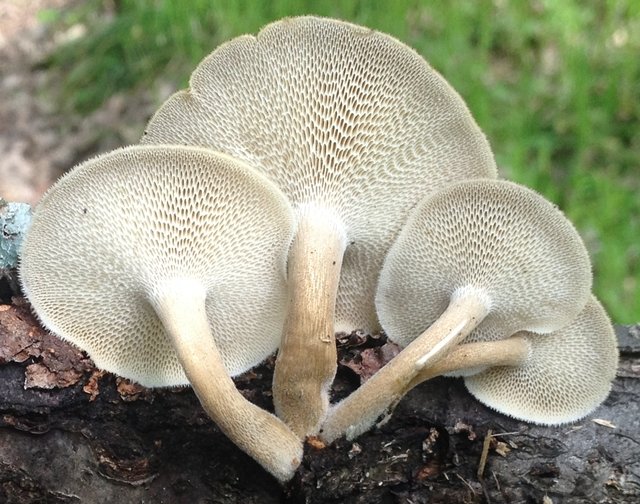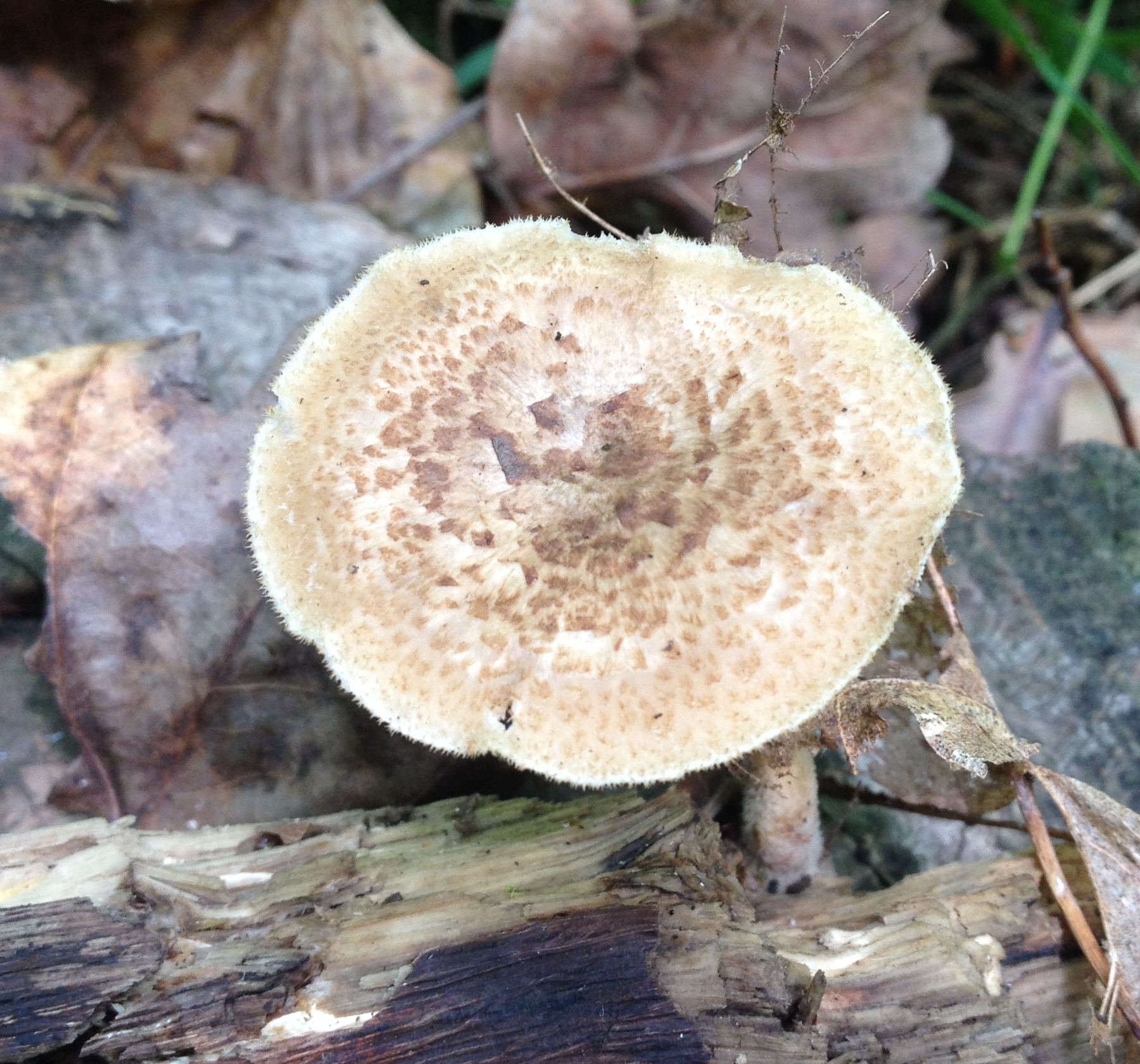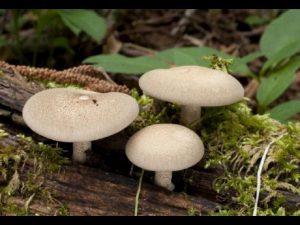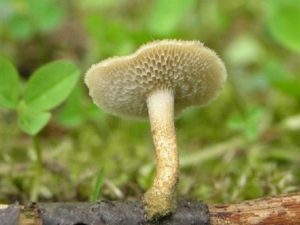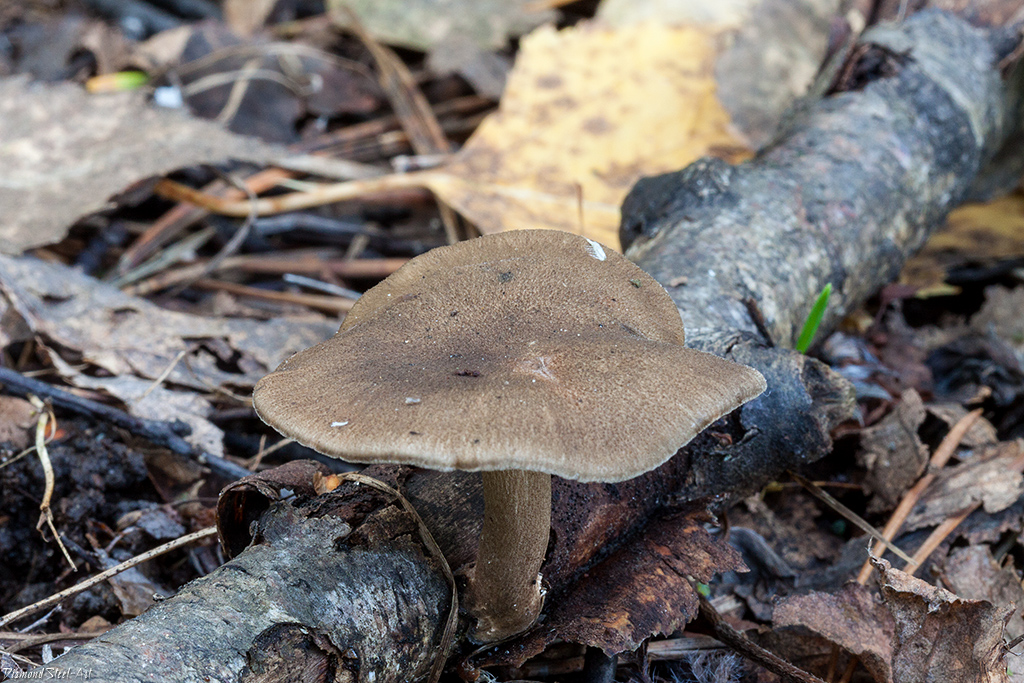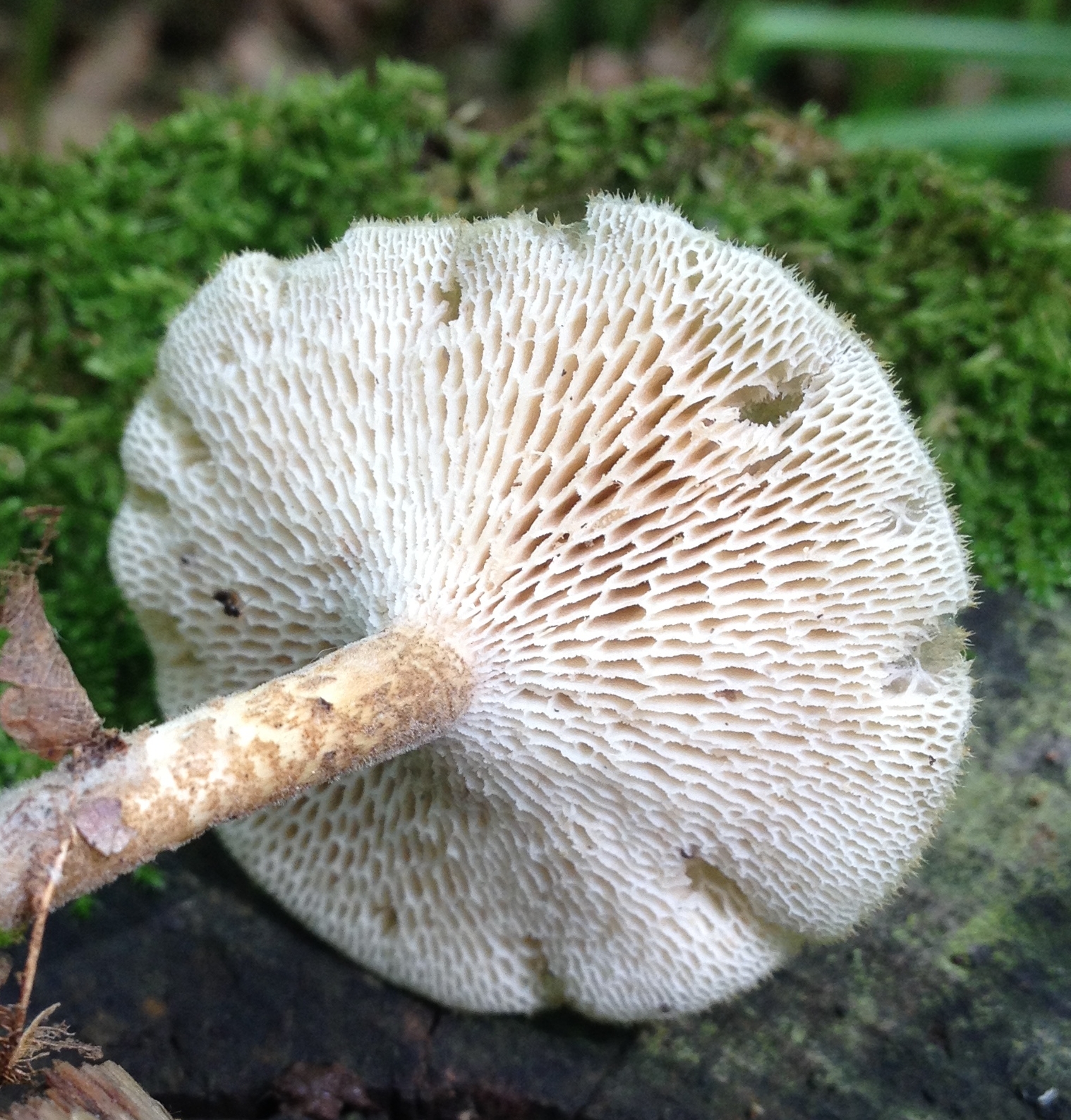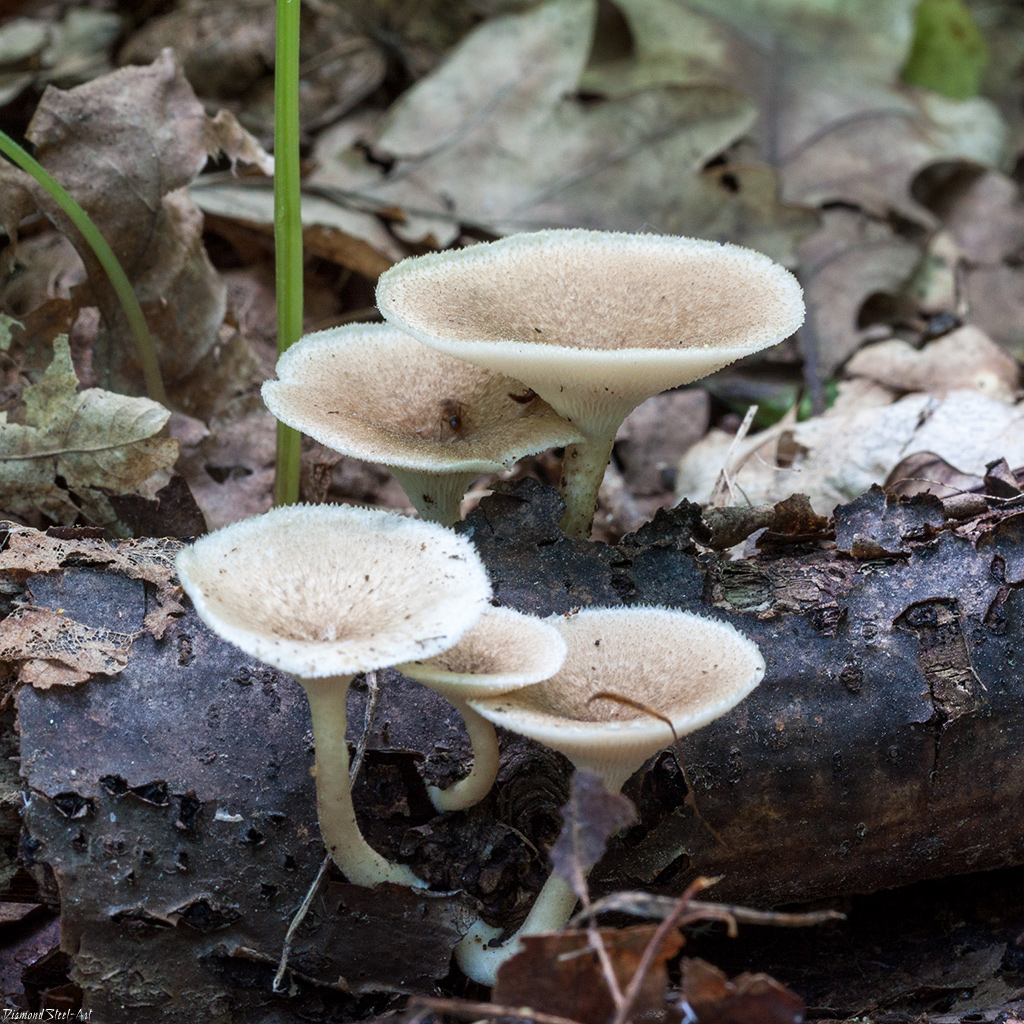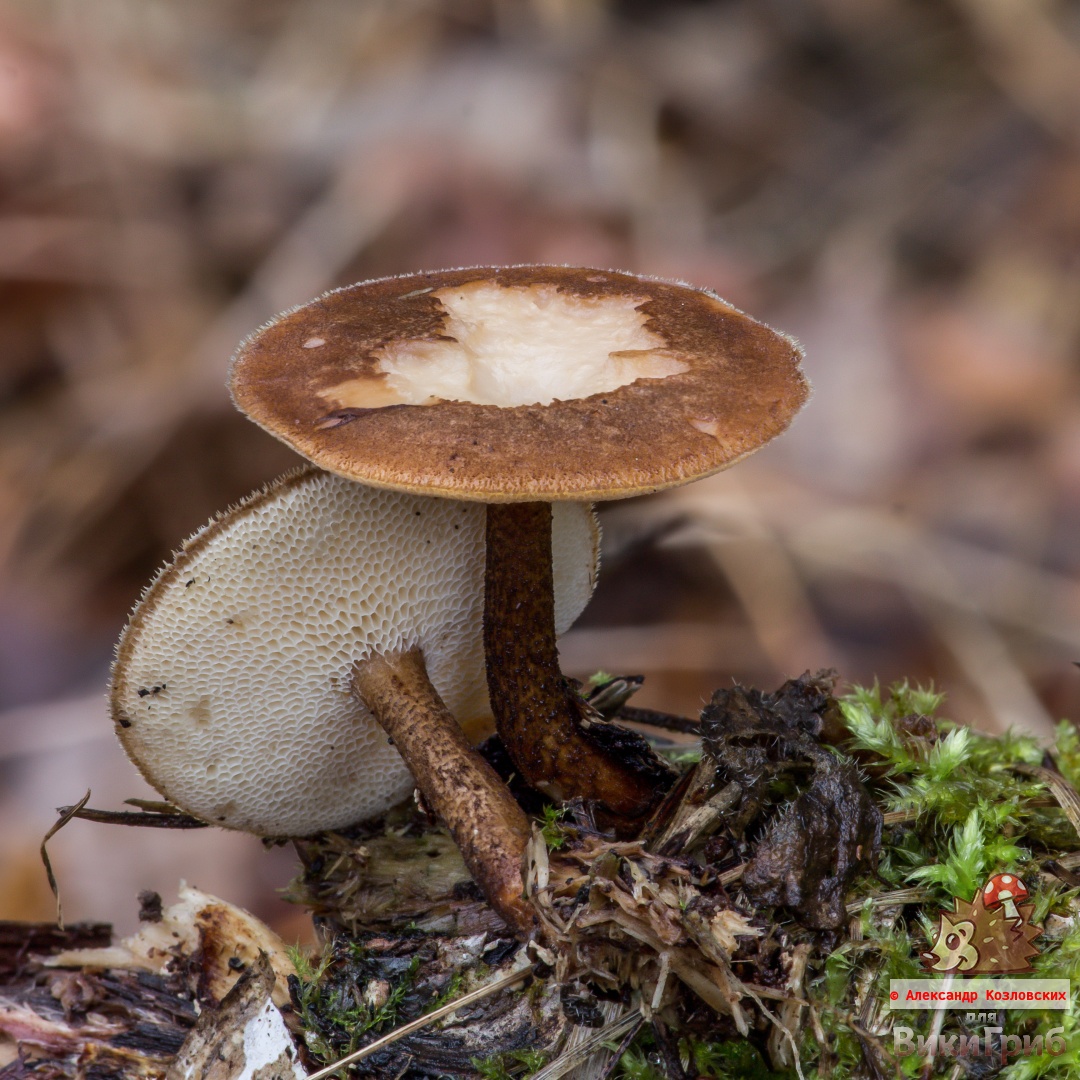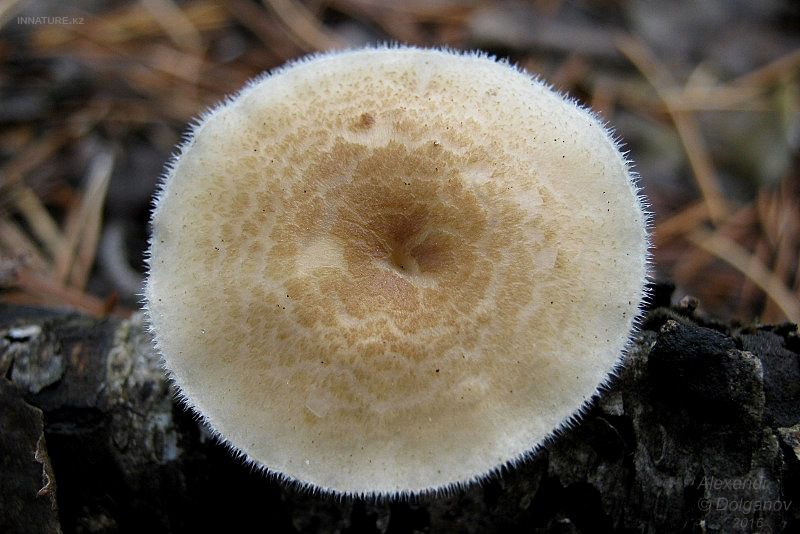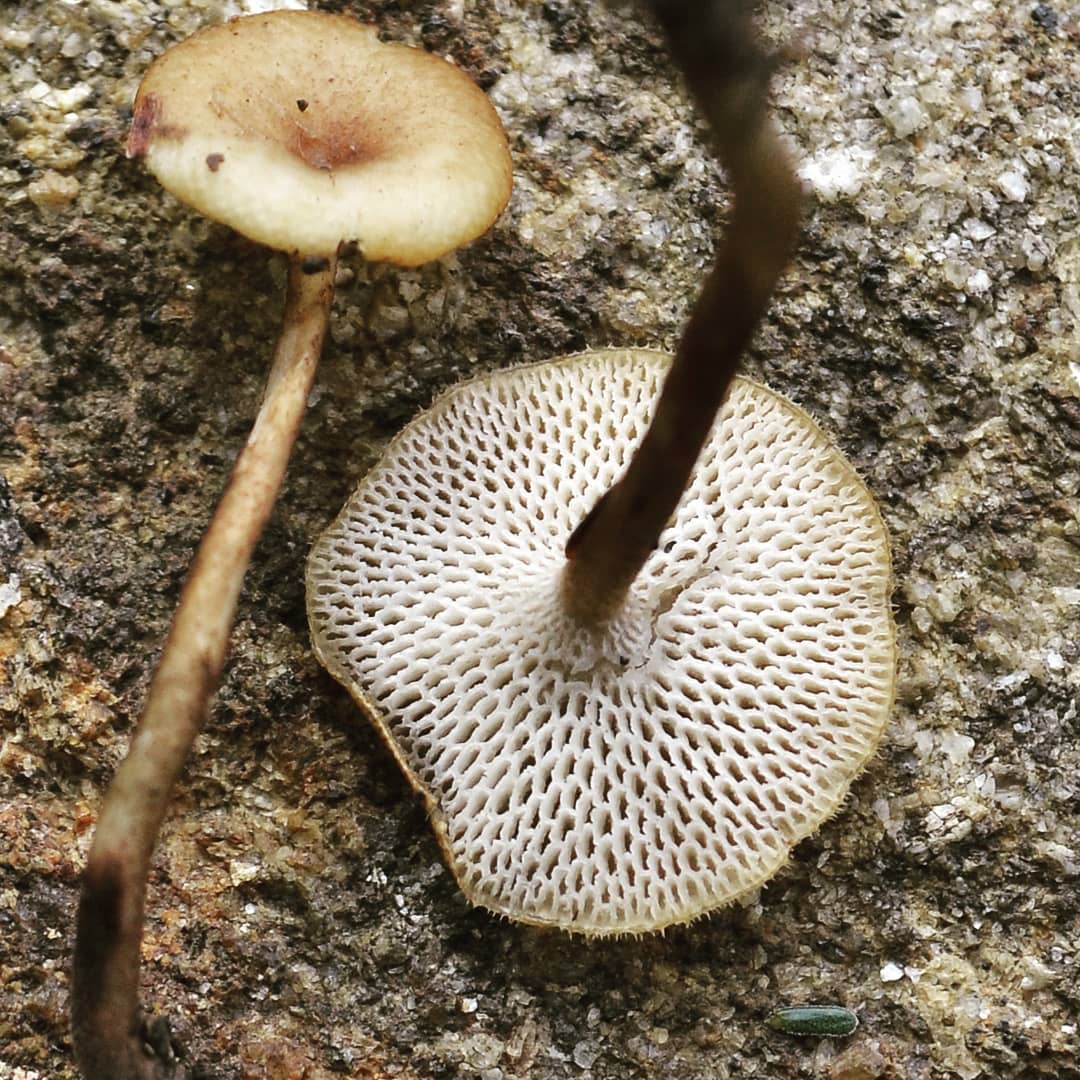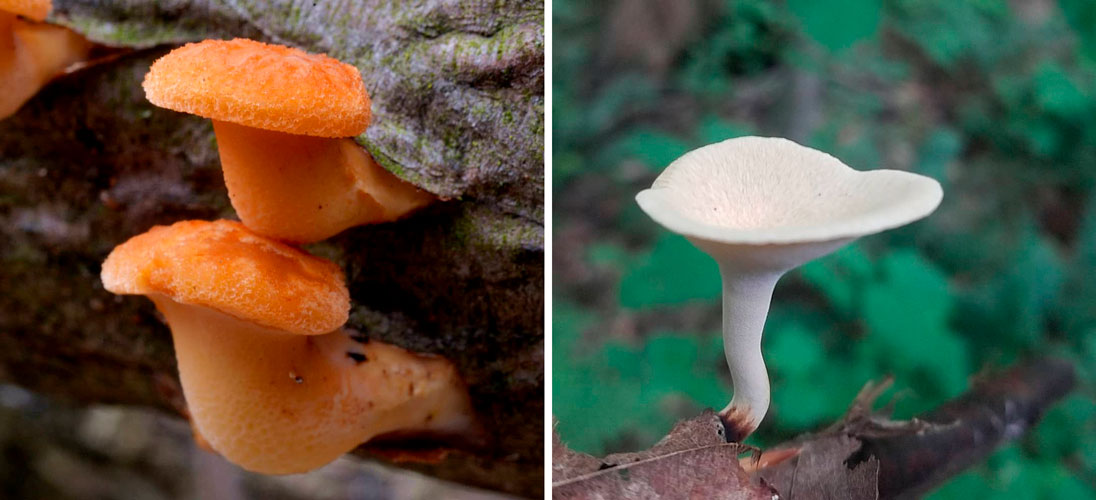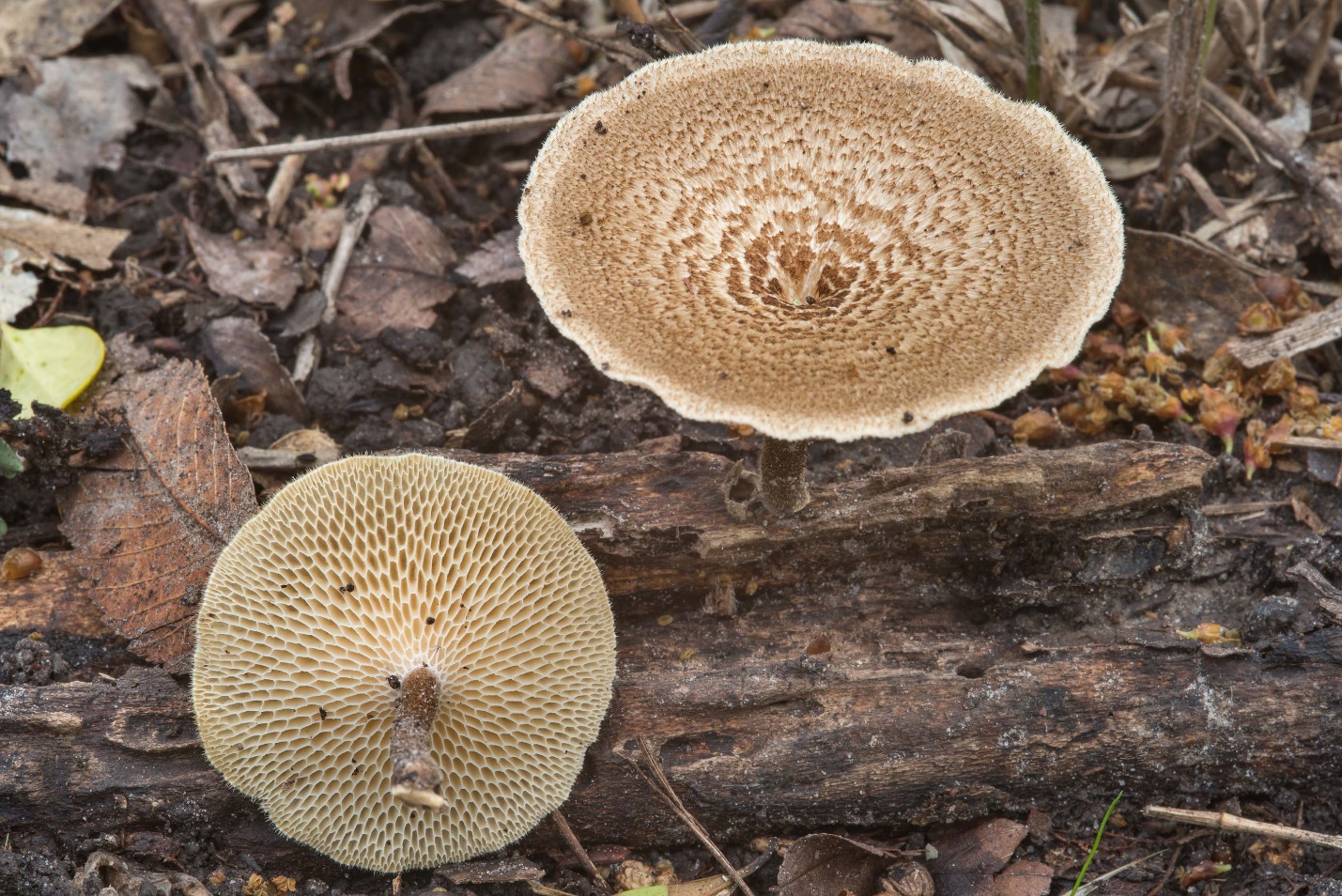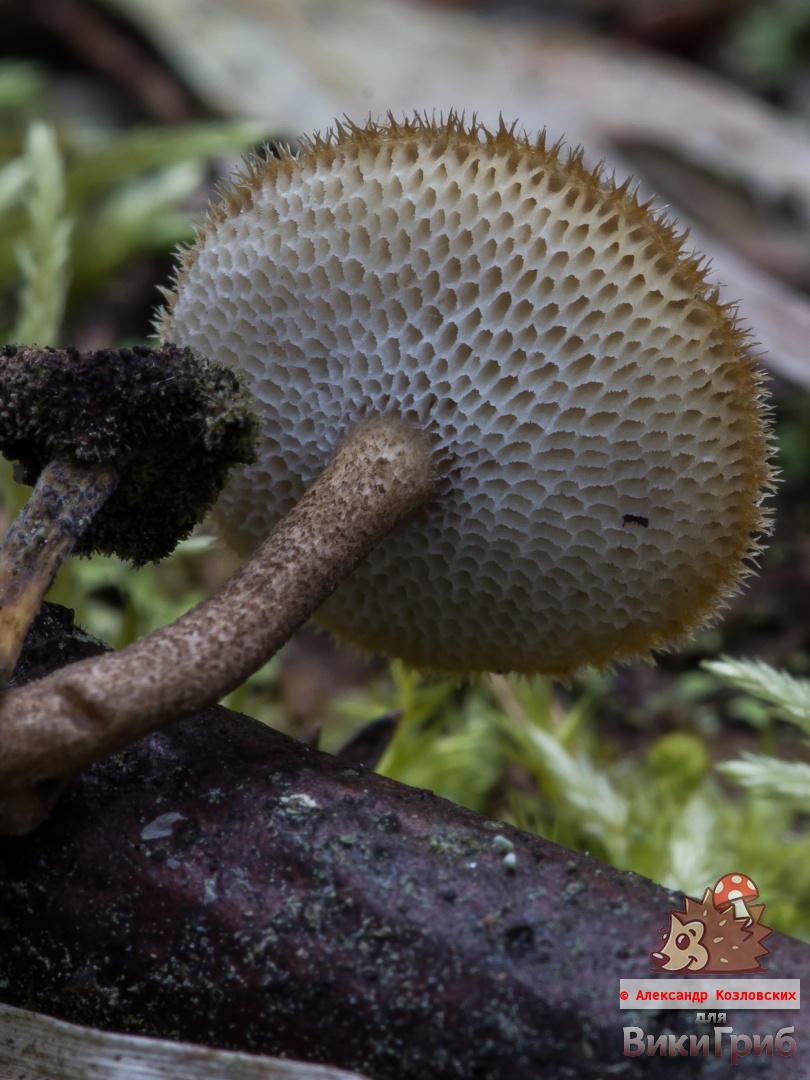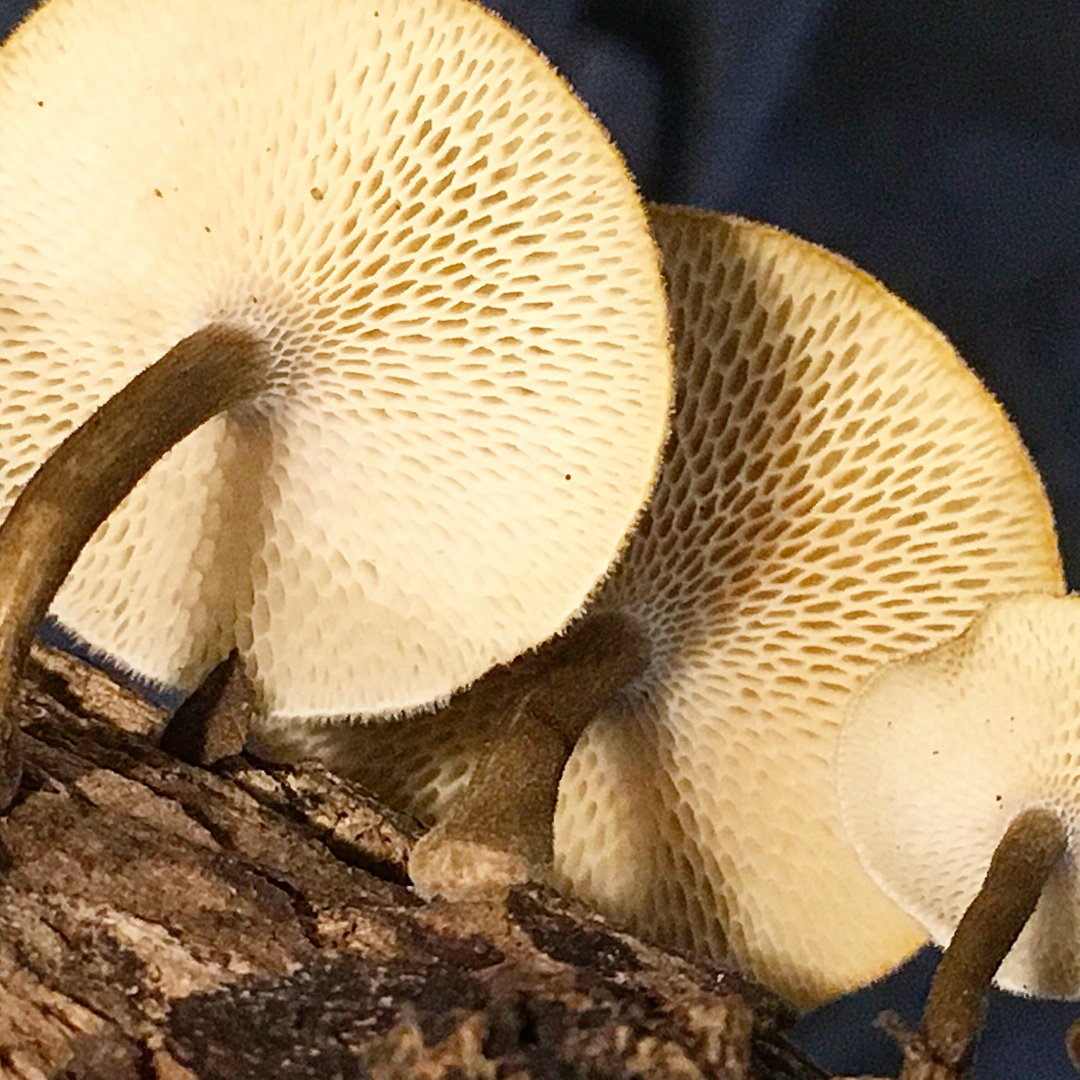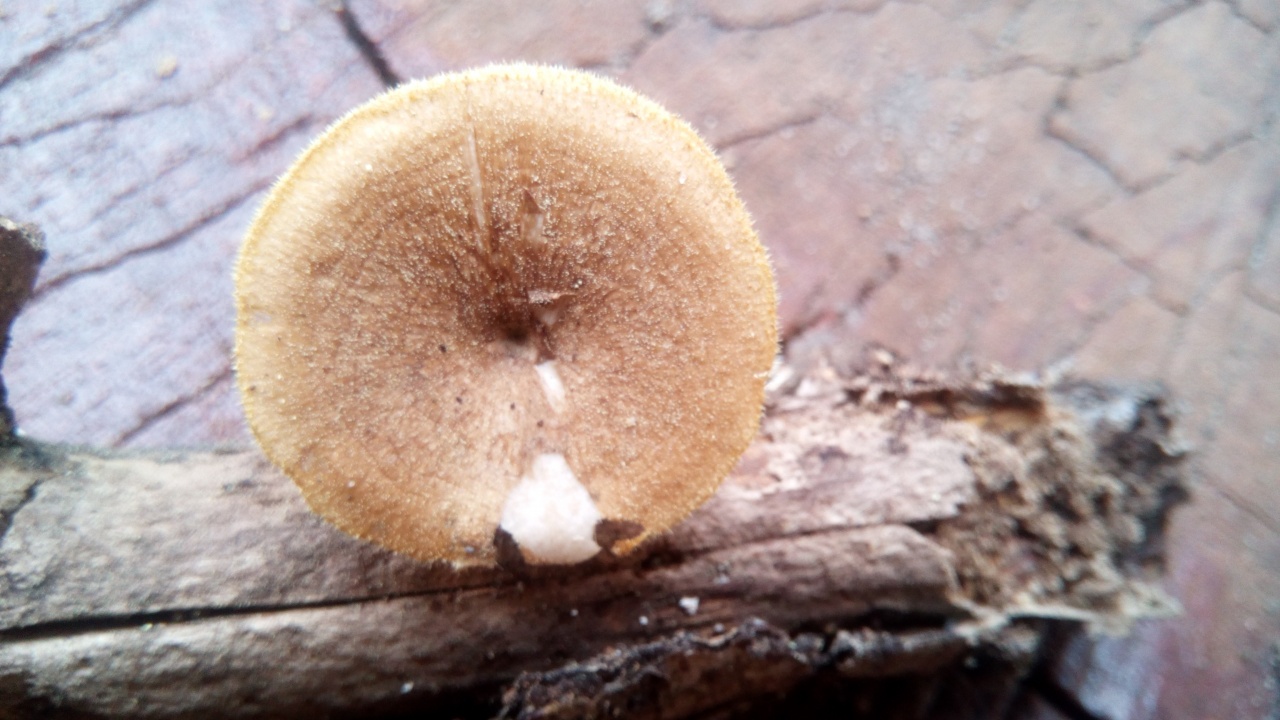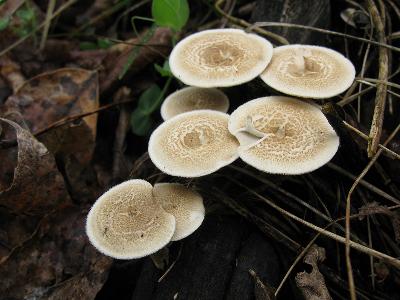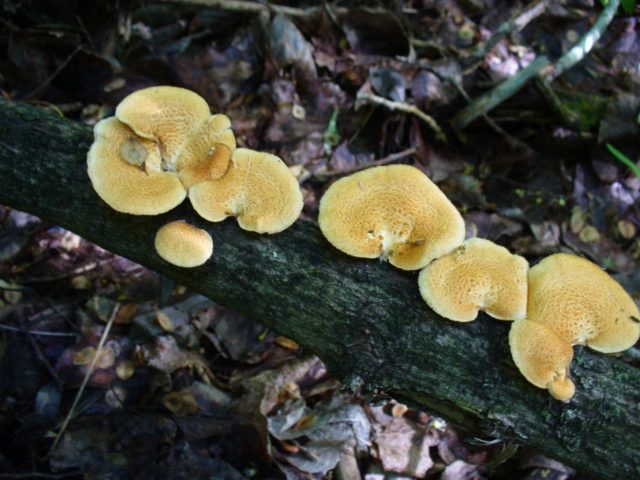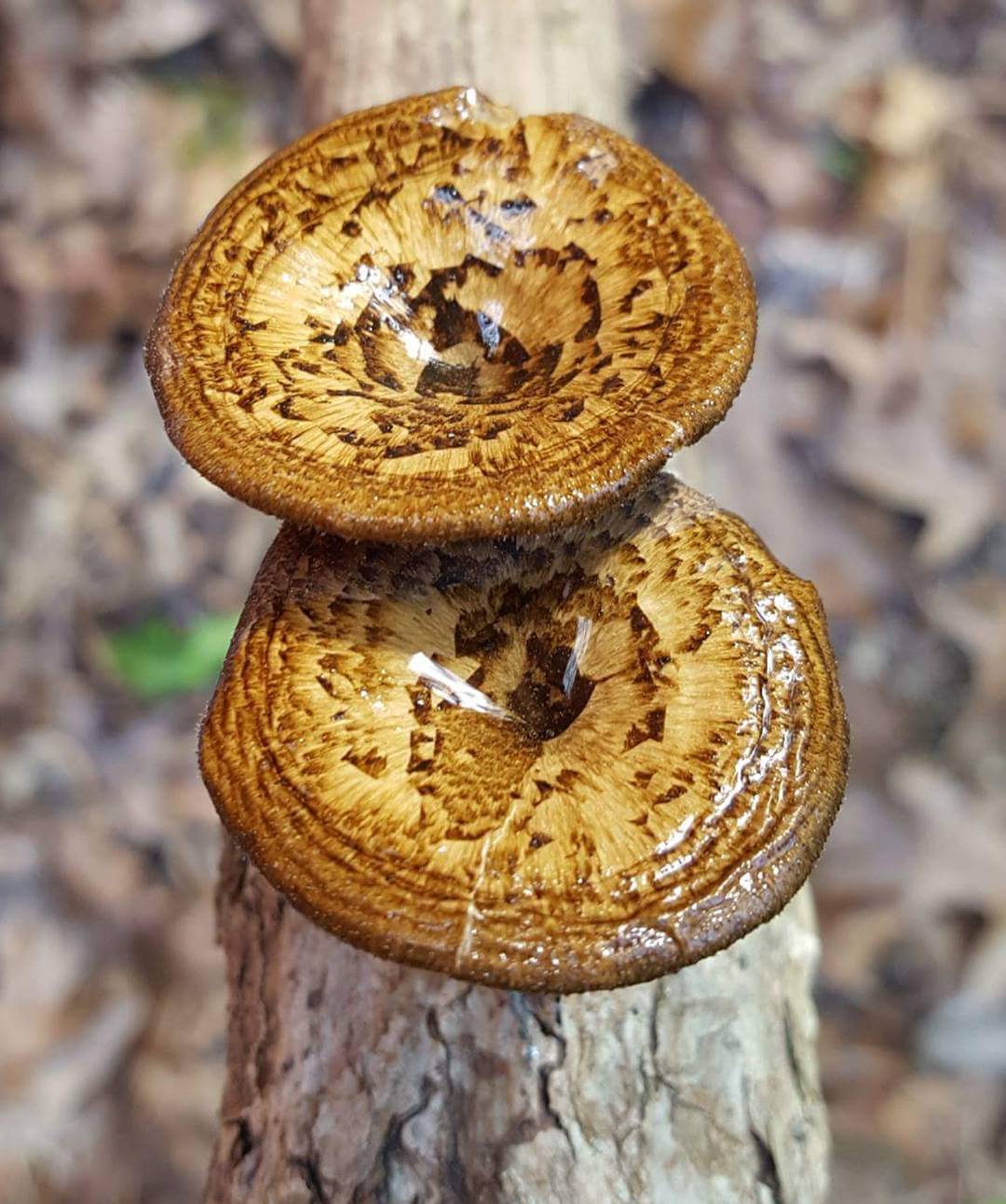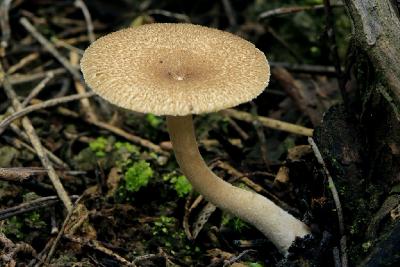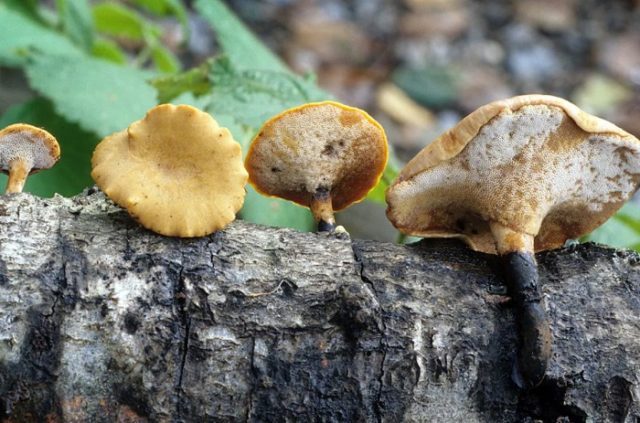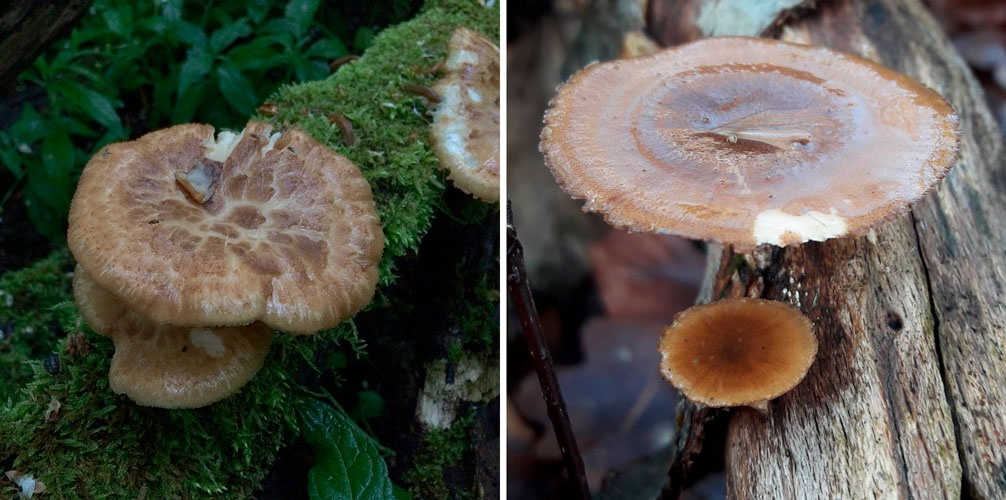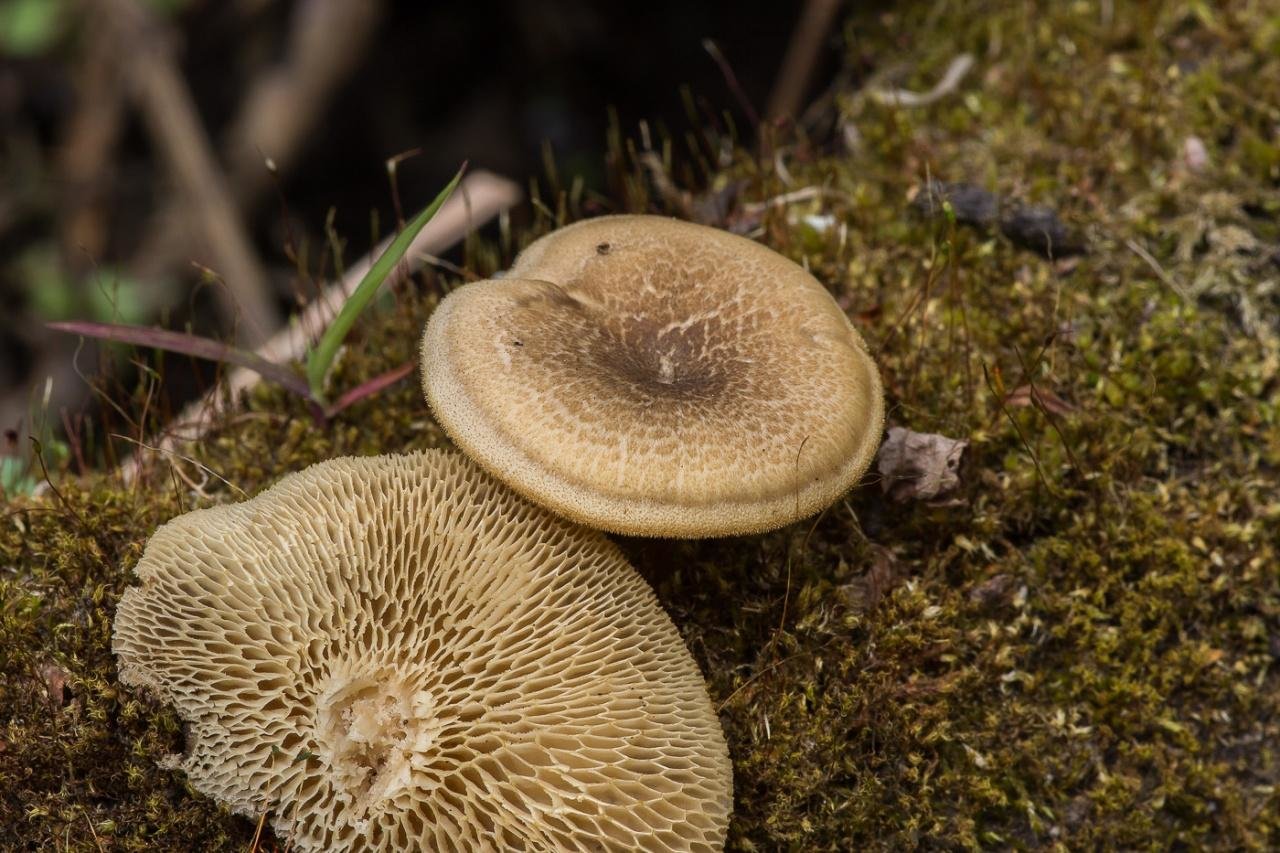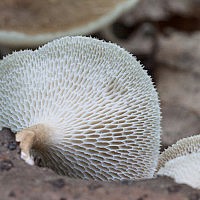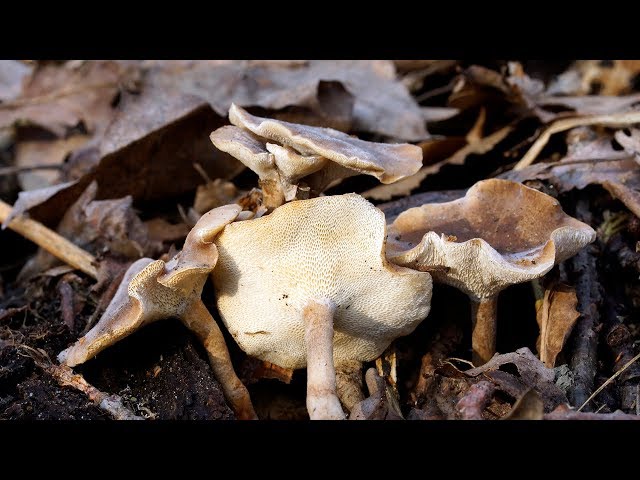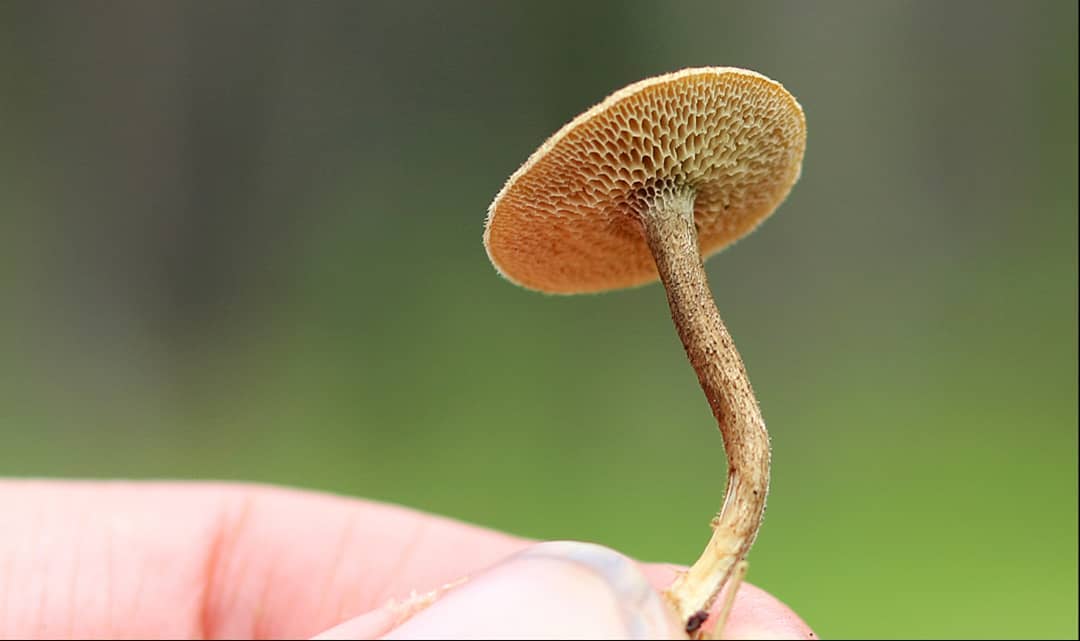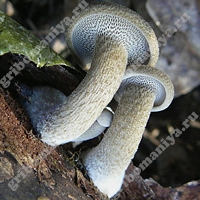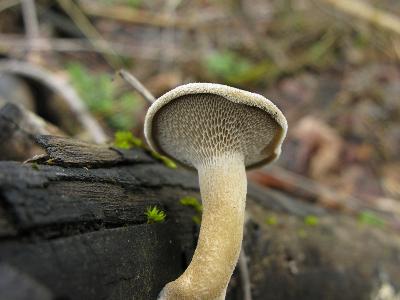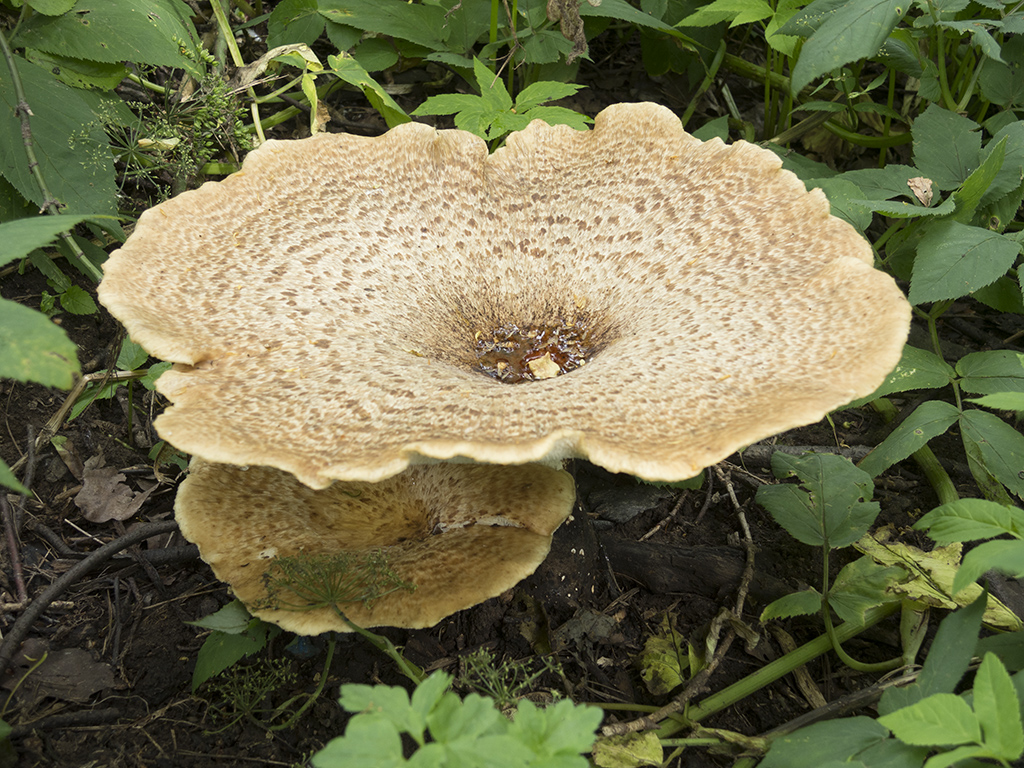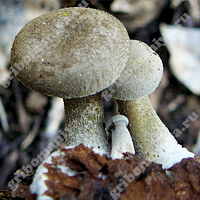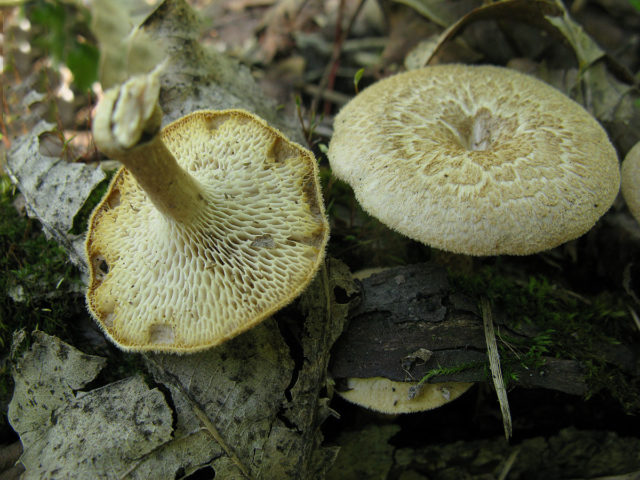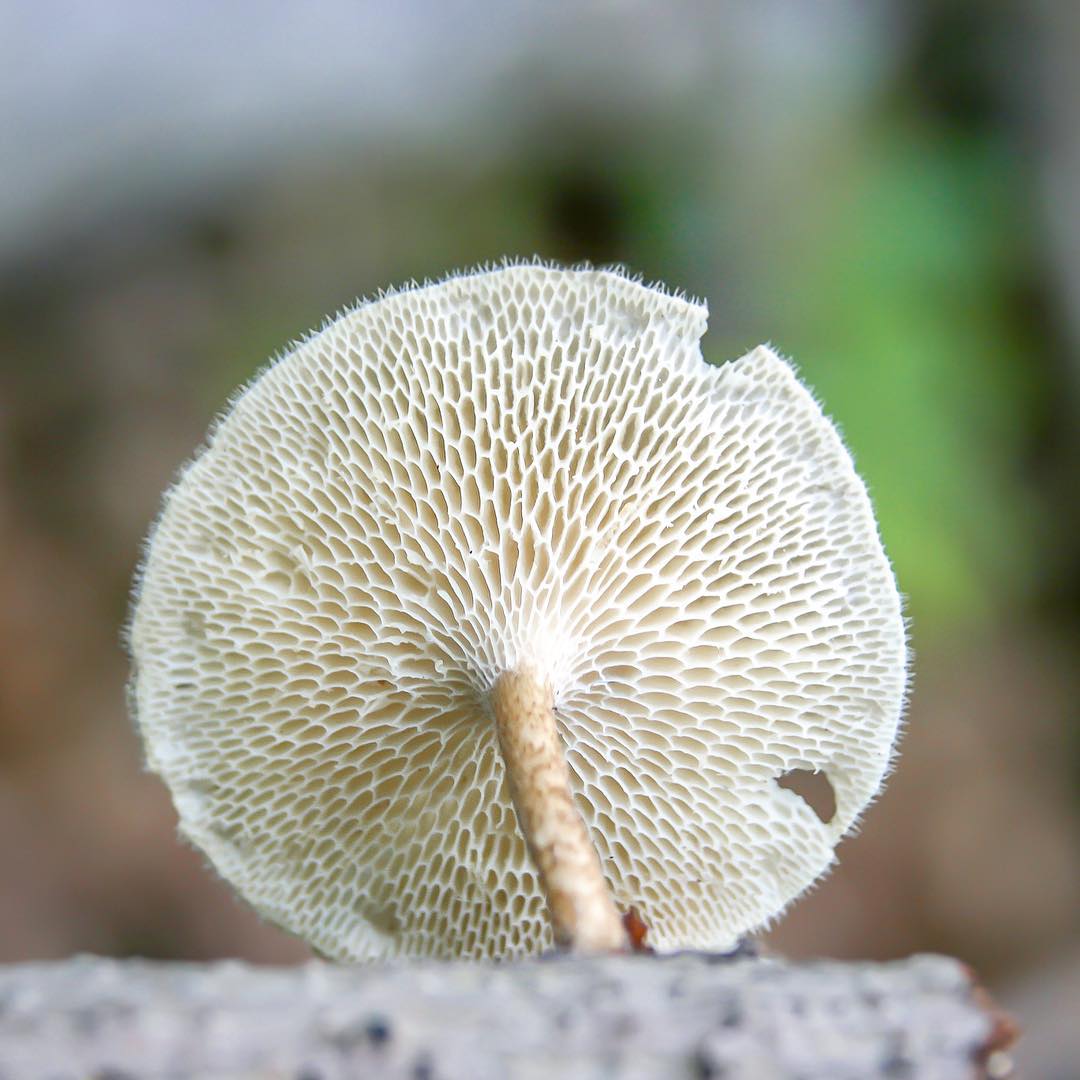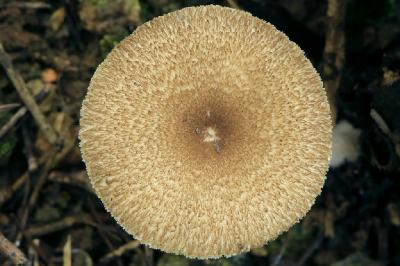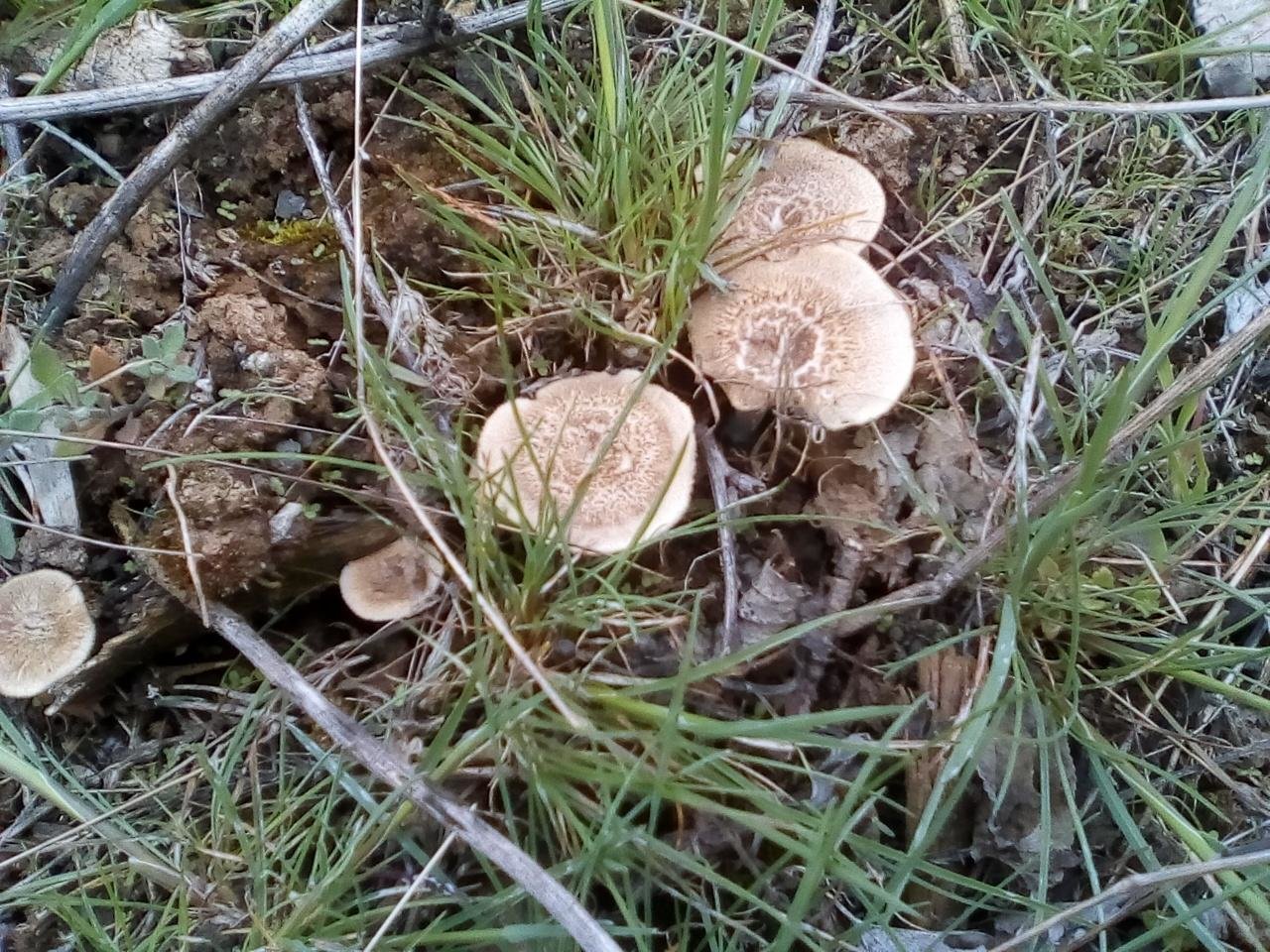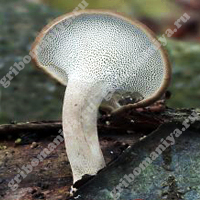Evaluation of taste, simple and delicious recipes for cooking
Young fruiting bodies of the scaly tinder fungus can be eaten, they are assigned the fourth edibility category. Old Polyporus are not suitable for food, as they become very tough. Timely collected and properly prepared mushroom has excellent taste.
Primary processing
After collecting, the tinder fungus must be soaked as quickly as possible, otherwise it will begin to grow stiff. You need to soak for at least six hours, ideally for a day. In this case, the water must be changed frequently. During the day - every hour.
After soaking, peel off the top skin in the form of scales and cut off the legs, as they are very hard. Cut off the dense parts of the mushroom, which are usually near the stem.
Cooking
Before any further culinary processing, the mushroom must be boiled for half an hour. For 500 grams of forest fruits, you should take three liters of water. The strained broth can be used to make soup.
Pickling
For cooking you will need:
- 0.5 kg of boiled mushrooms;
- 80 g apple cider vinegar 5%;
- 120 g of vegetable oil;
- 2-3 cloves of garlic;
- 10 black peppercorns;
- 1 tsp salt;
- 2 tsp Sahara;
- 4 things. bay leaf.
Cooking process:
- Press the garlic through a press.
- Put all the ingredients in a deep frying pan, cover with a lid and put on medium heat and simmer for 10 minutes.
- Cool, transfer to a jar and refrigerate for 4 hours.
Freezing
Blot the prepared boiled mushrooms with a napkin, removing excess moisture. Divide into small containers of 100-300 grams. Place in the freezer and use as needed.
Frying
Ingredients:
- mushrooms - 500 g;
- onions - 2 pcs.;
- vegetable oil - 3 tablespoons;
- dill and parsley greens - 50 g;
- salt, pepper - to taste.
Preparation:
- Boil the mushrooms.
- Cut the onion into quarters.
- Heat vegetable oil in a skillet and fry the vegetable in it until it becomes transparent.
- As soon as the onion has reached the desired state, add boiled mushrooms to the pan and fry over medium heat for 10-15 minutes.
Salting for the winter
Ingredients:
- mushrooms - 3 kg;
- table salt - 120 g;
- dill (greens, inflorescences or seeds) - to taste;
- black pepper - 30-35 peas;
- chavrovy leaf - 6 pcs.;
- garlic - 4-5 cloves.
The pre-boiled mushrooms are laid out in a salting container with all the other ingredients in the following order:
- A bay leaf, chopped garlic and dill, as well as black pepper are placed on the bottom.
- Spread the mushrooms on the spices in a layer of about 7 cm and sprinkle with salt.
- Lay out a few more layers to the edge of the container.
- Cover the blank with a napkin, put the load on top and put it in a dark place for a month.
- After the required time, the mushrooms will be ready to eat.
Drying
How to dry hare:
- Wipe the polypores with a damp cloth, thoroughly removing the soil and any other contamination.
- Cut into medium sized pieces.
- String on the thread so that the pieces do not touch each other.
- Hang to dry outdoors in a sunny place.
- You can cover with gauze so that insects have no access to fungi.
Tinder fungus cutlets
Ingredients:
- mushrooms - 500 g;
- white loaf - 4 slices;
- onions - 2 pcs.;
- vegetable oil - 150 g;
- wheat flour - 130g;
- water - 100 ml;
- chicken egg - 1 pc.;
- garlic - 2 cloves;
- salt, pepper - to taste.
Preparation:
- Pass the prepared boiled mushrooms through a meat grinder with a fine grid 2-3 times.
- Soak the loaf slices in water for 7-10 minutes.
- Grind the onion and garlic in a meat grinder.
- Combine prepared foods with egg, salt and spices.
- Form cutlets, roll them in flour and fry in vegetable oil on both sides.
Mutinus Ravenel mushrooms and canine: photo and description, features of the development of the genus
In the photo Mutinus ravinelii
Ravenel's mutinus (Mutinus ravinelii) is confused with the canine mutinus (Mutinus caninus), which has a yellow-beige leg.
The kingdom of mushrooms occupies a separate place in biological science. There are more than 250 thousand of them. Mushrooms can live both on land and in water, with different readings of humidity and temperature.
Some species may outwardly be similar to each other, or they may be completely different, for example, the genus Mutinus, which has a very extraordinary appearance, bears little resemblance to a mushroom in the minds of most people.
They are considered quite rare.
He came to Western Europe in the middle of the last century from America. But on the territory of Russia you will not meet him so often. Loves fertile soil, grows actively at high humidity.
The main features of the development and structure:
- in the development process, there are two stages (ovoid and the appearance of a cylindrical leg);
- the body of the mutinus is spongy, porous;
- the stem ends with a tip that differs in color (usually brighter);
- it multiplies, like all mushrooms, by spores that are contained in the formed mucus with an unpleasant, putrid odor;
- the spread of spores occurs with the help of insects.
Mutinuses are not edible. But some mushroom pickers say that in the developmental stage of the "testicle", they can well be used in cooking and have the taste of an ordinary mushroom. But note that no research has been carried out on this score. Therefore, we still do not recommend eating it.
See what the mutinus mushroom looks like in the photo:
Dog mutinus: photo and description
Even an experienced mushroom picker cannot always boast that he saw him in the forests of our region. This species is more common in America, from where it was introduced to Europe. Canine mutinus, the description of which will follow below, is listed in the Red Book, a rather rare species of this species of fungi.
In the photo Mutinus dog
By its appearance, it resembles a part of the body of a dog, which is not clear how it sticks out of the ground. The color of the mutinus, starting from the ground, is pale pink, which gradually turns into a bright red tip. On the leg, under the cylindrical part, there is a mucous girdle.
Its size is no more than 2 cm. The shade of the discharge is greenish-brown. The spores of the fungus ripen here. Flies and other insects are constantly circling in this part. They are attracted by the specific smell that this mucus emits. In turn, it is the insects that carry the spores of the fungus.
The development of the canine mutinus fungus begins with the appearance of the fruiting body. It looks like an egg up to 4 cm in diameter. Has a white color. Further, this egg bursts, forming blades, and the body of the fungus begins to grow from the core. Its height can reach 15 cm. The upper part later becomes pointed and acquires a specific red tint.
See what the dog mutinus looks like in the photo:
Mutinus Ravenel mushroom: photo and description
In the photo, the mushroom mutinus Ravenel
Outwardly, this variety of mutinus has a similarity to the dog. You can meet him in the forest from the end of July until September. Most often it can be found:
- on soils rich in humus;
- in places of decaying wood.
It grows especially quickly after heavy rains.
Outwardly, it looks very strange and not attractive. With all his appearance, he seems to show that he is inedible. In addition, it emits a rather nasty smell. It is for this peculiarity that the people received the name "smelly morel".
See what the Ravenel mutinus looks like in the photo:
In the process of its growth, the fungus goes through two stages of development, like the canine mutinus. Initially, an egg-like formation appears above the ground. Its size is rarely more than 3 cm in diameter. A delicate film formation hides the rudiment of the leg of the body, it looks like a bright red process.
The egg has two lobes that break and allow the porous stem of the body to develop. Its length reaches 9 cm, and in diameter it is no more than 1 cm. Towards the end, the stem has a red pointed tip.
In an adult fungus, the upper part is covered with mucus with spores, which has a dark olive tint and gives off the smell of carrion. It is during this period that flies begin to circle near the mushroom, which are attracted by this stench.
Its pulp is tender and porous.
If you find a mutinus in the forest, then examine it carefully. Despite all its unpleasant appearance, the mushroom looks very extraordinary. Do not rip it off, as this species is quite rare in our area. Perhaps you will not see another such specimen for a long time.
Contraindications
Professional mushroom pickers advise not to experiment with medicines that have been prepared on the basis of tinder fungus, because they can cause an allergic reaction in the form of a skin rash. The mushroom in question has a mild laxative effect, therefore, when treating liver diseases, it is not recommended to use it for diarrhea, so as not to worsen your own well-being. For people suffering from urolithiasis, such recipes will not help either - the existing health troubles will only intensify, and the ailments that bother you will not disappear anywhere. Also, the main contraindication is the period of pregnancy (especially the last months) and breastfeeding.
If the selected formulations are improperly prepared, then they will also adversely affect the patient in the form of dizziness, nausea and vomiting. In any case, it is worth being treated with a tinder fungus only under the strict supervision of a personal doctor.
It is forbidden to use antibiotics and other potent drugs during treatment with a fungus. It is worth adjusting your usual diet, since during this period the patient is contraindicated in meat products (smoked meats and sausages, pickles), fatty broths, hot sauces, seasonings and spices, strong black tea and coffee in large quantities. Now the menu should be dairy-vegetable, with strict adherence to the dosage.
As for the tinder fungus, there are still active disputes: can this mushroom be considered edible or everyone risks poisoning it, is it suitable for medicinal tinctures or does it give absolutely no effect? This family has hundreds of species that differ in appearance and structure of the pulp, which means that the principle of application for each option should not duplicate other recommendations. If you use a tinder fungus under the close supervision of an experienced doctor, then the beneficial components of the mushroom can really help improve your health at home.
Tinder fungus (Polyporus pit, Lentinus arcularius) what it looks like, where and how it grows, edible
Polyporus pit (Polyporus pit): photo and description, use
| Name: | Tinder fungus pit |
| Latin name: | Lentinus arcularius |
| View: | Conditionally edible |
| Synonyms: | Polyporus arcularius, Polyporus pitted, Polyporus casket-shaped, Polyporus decorated, Tinder vase-like, Tinder vaulted, Tinder casket. |
| Specifications: | |
| Systematics: |
|
Polyporous polypore, aka polyporus pit, is considered a representative of the Polyporovye family, the genus Sawfoot. In addition to these names, it has others: polyporus or casket-shaped tinder fungus, decorated polyporus, vase-like tinder fungus, vaulted tinder fungus.
Description of pitted tinder fungus
The mushroom has no pronounced taste
This specimen is a small fruiting body in the form of a cap and a leg. The characteristic feature is that the surface is covered with very small hairs and scales. Spore powder of cream color.
The spores are cylindrical, smooth. The flesh is white or cream colored, thin and rather tough. When ripe, the color does not change. It emits a faint mushroom smell. Separate reference books indicate that the aroma is not pronounced.
Description of the hat
there are no toxic twins in the pit tinder fungus
The size of the cap can vary from 1 to 4 cm, not often up to 8 cm. Covered with paint in shades of brown. At the initial stage of development, it is convex, after which it acquires a flat shape or slightly depressed. The surface is dry, covered with very small scales and hairs of a golden brown tone. The hymenophore is descending, porous, white at a young age, after which it gradually turns brown. The pores are radial, angular or hexagonal, with fine finely toothed edges, no more than 2 mm across.
Leg description
The leg can be positioned centrally or slightly shifted
Polyporus casket has an ideal, dry stem up to 6 cm long and up to 4 mm wide. The color may be the same as the hat or slightly different. In the most different cases, its color can vary from yellow to brown. The surface is covered with very small hairs and scales.
Where and how it grows
Pit polyporus is considered a very common variation that can be found literally in every corner of the world. It grows only on hardwoods, causing white rot. Active fruiting occurs in spring and summer. Occurs both one at a time and in groups.
Eat a mushroom or not
The mushroom belongs to the category of conditionally edible mushrooms. Some sources attribute this species to inedible because of its especially thin cap and stiff legs in adulthood. However, the opinions of experts agree that this specimen does not contain toxic substances. The species in question is known to be edible in Hong Kong, Nepal, New Guinea and Peru.
Doubles and their differences
Pit tinder fungus has similarities in appearance with such gifts of the forest:
- The changeable tinder fungus is an inedible specimen. It is similar to the fungus in question with very small fruiting bodies. So, the size of the double's hat is no more than five centimeters in diameter. However, you can distinguish the changeable tinder fungus from the pitted one by the flat surface of the cap and the leg of a darker color.
- Cellular polypore - refers to inedible mushrooms. The fruit body has a fan-shaped, oval or semicircular shape. A barely perceptible leg is considered a characteristic feature, because its length is no more than 1 cm.
- Winter tinder fungus is inedible. Basically, the fruit body of the twin is slightly larger. Also, the color of the fruit is darker.
Using the pit tinder fungus
As everyone knows, many tinder fungi are used in homeopathy and for the production of dietary supplements. This number includes this kind of mushroom.
Conclusion
Tinder fungus is a small mushroom that can be found on trees in deciduous or mixed forests. As for edibility, this question is rather ambiguous: some reference books attribute to it the category of conditionally edible mushrooms, others - inedible. However, judging by the smaller size of the fruit bodies and the unexpressed taste, it should be considered that this species has no nutritional value.
External description
The fruiting bodies of the bristly-haired tinder fungus are caps, annuals, grow mainly singly, sometimes they are arranged in a tiled pattern, 2-3 caps at a time. Moreover, the fruiting bodies grow together widely with the surface of the substrate. The size of the cap of the bristly-haired tinder fungus is 10 * 16 * 8 cm. The upper part of the caps of young mushrooms is characterized by a reddish-orange color; as it ripens, it becomes red-brown and even dark brown, almost black. Its surface is velvety, covered with fine hairs. The color of the edges of the cap is uniform with the color of the entire fruiting body.
The flesh of the bristly-haired tinder fungus is brown, but lighter near the surface along the edges of the cap. It has no zones of various colors, and the structure can be characterized as radially fibrous. On contact with some chemical components, it can change its color to black.
In immature mushrooms, the pores in the hymenophore are characterized by a yellowish-brown tint, have an irregular shape. Gradually, their color changes to a rusty brown. There are 2-3 spores per 1 mm of the area. The hymenophore is of a tubular type, and the tubules in its composition have a length of 0.5-4 cm, and an ocher-rusty color. The spores of the described type of fungi have an almost spherical shape, can be broadly elliptical. Their surface is often smooth. Basidia consist of four spores, have a broad-headed shape. Bristly-haired polypore (Inonotus hispidus) has a monomytic hyphal system.
Rhodotus palmatus (Rhodotus palmatus)
Other names
- Dendrosarcus subpalmatus;
- Pleurotus subpalmatus;
- Gyrophila palmata;
- Rhodotus subpalmatus.
The palm-shaped Rhodotus is the only member of the genus Rhodotus, belonging to the Physalacriaceae family, and has a rather specific appearance. The pink or pinkish-orange cap of this fungus in mature fruiting bodies is densely speckled with a venous mesh. Because of this appearance, the described mushroom is often called a shriveled peach. The fruity aroma of the mushroom pulp contributed to the emergence of this name to some extent. The palatability of the palm-shaped rhodotus is not very good, the pulp is very bitter, elastic.
External description
The fruiting body of the palm-shaped rhodotus is hat-pectus. The mushroom cap has a diameter of 3-15 cm, a convex shape and a curved edge, very elastic, initially with a smooth surface, and in old mushrooms it is covered with a wrinkled venous mesh. Only sometimes the surface of the cap of this mushroom remains unchanged. The mesh appearing on the cap of the mushroom is slightly lighter in color than the rest of the surface, while the color of the cap between the wrinkled scars may change. The color of the surface will depend on how intense the lighting was during the development of the fruiting body of the fungus. It can be orange, salmon or pink. In young mushrooms, the fruiting body can secrete droplets of reddish liquid.
The leg of the mushroom is located in the center, more often - eccentric, has a length of 1-7 cm, and in diameter is 0.3-1.5 cm, sometimes hollow, the flesh of the leg is very hard, has a small edge on its surface, pinkish, but without a volva and a peri-cap ring ... The length of the leg will depend on how high-quality the illumination of the fruiting body was during the period of its development.
The mushroom flesh of the palm-shaped rhodotus is elastic, has a jelly-like layer located under the thin skin of the cap, a bitter taste and a barely pronounced fruity aroma, reminiscent of the smell of citrus fruits or apricots. When interacting with iron salts, the color of the pulp immediately changes, becoming dark green.
The hymenophore of the described fungus is lamellar. Elements of the hymenophore - plates, located freely, can be creeping along the stem of the fungus or notched-attached. Often they have an abdomen, greater thickness and frequency of location. Moreover, large plates of the hymenophore are often interspersed with small and thin ones. According to the color of the plate of the described fungus, they are pale-salmon-pink, some of them do not reach the edge of the cap and the base of the leg. Fungal spores are 5.5-7 * 5-7 (8) microns in size. Their surface is covered with warts, and the spores themselves are often spherical.
Season and habitat of the mushroom
Rhodotus palmatus belongs to the saprotroph category. He prefers to live mainly on stumps and trunks of deciduous trees. Occurs singly or in small groups, mainly on elm fallen trees. There is information about the growth of the described species of mushrooms on the wood of maple, American linden, horse chestnut. Griyu rhodotus palmate is widespread in many European countries, in Asia, North America, New Zealand, Africa. In mixed coniferous and deciduous forests, such mushrooms can be seen very rarely.Active fruiting of the palm-shaped rhodotus occurs from spring to late autumn.
Edibility
The palm-shaped rhodotus (Rhodotus palmatus) is inedible. In general, its nutritional properties have been little studied, but too hard pulp does not allow eating this mushroom. Actually, these properties of the pulp make the described type of mushrooms inedible.
Similar types and differences from them
The palm-shaped rhodotus has a rather specific appearance. The cap in young mushrooms of this species is pinkish, and in mature ones it is orange-pink, and on its surface, a net of thin and closely intertwined veins characteristic of this species is almost always visible. Such signs do not allow the described mushroom to be confused with any other, moreover, the pulp of the fruiting body has a clearly distinguishable fruity aroma.
Other information about the mushroom
Despite the fact that the Rhodotus palmate belongs to the number of inedible mushrooms, it has some medicinal properties. They were discovered in 2000 by a group of Spanish microbiologists. Research has confirmed that this type of fungus has good antimicrobial activity against human pathogens.
Rhodotus palmatus is included in the Red Book of several countries (Austria, Estonia, Romania, Poland, Norway, Germany, Sweden, Slovakia).
Bordered polypore (Fomitopsis pinicola)
Synonyms:
- Pine tinder fungus
- Fomitopsis pinicola
- Boletus pinicola
- Trametes pinicola
- Pseudofomes pinicola
Bordered polypore (Fomitopsis pinicola) is a mushroom of the Fomitopsis family, belongs to the Fomitopsis genus.
Description
Bordered polypore (Fomitopsis pinicola) is a well-known fungus, belongs to saprophytes. It is characterized by perennial fruiting bodies that grow sideways, sessile. Young specimens have a rounded or hemispherical shape. Over time, the shape of this type of mushroom changes. It can be hoof-like and cushion-shaped.
Hat: usually of medium size, about 20-25 cm in diameter, but can easily reach 30 or even 40 centimeters (in old mushrooms). The height of the cap is up to 10 cm. Concentric areas are clearly visible on its surface. They vary in color and are separated by depressions. The colors can be very different: from red to dark brownish red or from brown to black at the site of attachment or after maturation, with a marginal area from white to yellow.
The surface of the cap is covered with a thin skin, lacquered-shiny on the edge or in very young mushrooms, later becomes dull, and closer to the center - slightly resinous.
Leg: absent.
If wet weather sets in outside, droplets of liquid appear on the surface of the fruiting body of the bordered tinder fungus. This process is called gutting.
Very young bordered polypores also gutt:
And more mature specimens during the period of active growth:
The pulp of the mushroom is dense, elastic, resembles a cork in structure. It can sometimes be woody. It becomes flaky when broken. Light brown or light beige (chestnut in mature fruiting bodies).
Hymenophore: tubular, cream or beige. It darkens with mechanical stress, becoming gray or dark brown. The pores are rounded, well-defined, small, 3-6 pores per 1 mm, about 8 mm deep
Chemical reactions: KOH on pulp from red to dark brown. Spore powder: white, yellow or cream. Spores: 6-9 x 3.5-4.5 microns, cylindrical, non-amyloid, smooth, smooth.
Season and habitat of the mushroom
Bordered tinder fungi are referred to as saprophytes, provoking the development of brown rot. It is found in many regions, but most often in Europe and Russia.
Despite the epithet “Pinicola”, from pinūs - pine, living on pines, pine, Bordered polypore grows successfully on dead wood and dead wood not only of conifers, but also deciduous trees, on stumps. If a living tree is weakened, then the fungus can also infect it, starting life as a parasite, later becoming a saprophyte.The fruiting bodies of fringed polypores usually begin to grow at the bottom of the tree trunk.
Edibility
Edible. Used to create mushroom flavored seasonings. It is a raw material for homeopathic medicines. It is successfully used in Chinese traditional medicine.
Similar types and differences from them
This mushroom is difficult to confuse with others. Unique concentric stripes of different colors on the surface of the cap are the decoration and calling card of this mushroom.
Other information about the mushroom
Bordered polypore (Fomitopsis pinicola) causes serious damage to timber warehouses in Siberia. Causes decay of wood blanks.
Photo: Maria, Alexander Kozlovskikh, Gumenyuk Vitaly.
Edible mushrooms, berries, herbs
Curly loafer (helvella crispa)
From May to early June and from mid-August to October in deciduous, coniferous and mixed forests, near bushes, along paths and roads, you can meet a mushroom from the Helwell family - curly lobster (curly helvella). The fungus has an irregularly shaped fruiting body with a notched ribbed stem. Grows in groups, rarely singly. preferring the grass cover.
The hat is from 1.5 to 4.5 cm in diameter, two- or four-bladed, usually curved. The edges are wavy-curly, free, adherent in places. The color is light yellow or ocher.
The leg is pitted-furrowed, fusiform, slightly widened towards the base, light white, hollow inside.
The pulp is thin, brittle, whitish, practically odorless.
The mushroom is edible and has low taste and organoleptic qualities. Edible after pre-cooking for at least 12 minutes. In addition to cooking, you can also dry it.
Photos of curly lobe (helvella crispa)
Video about how and in what conditions curly lobes grow, how these mushrooms look in natural conditions
The collected impressive volume of Ivan-tea raw materials or limited free time (sometimes all together) do not allow making Koporye tea by hand using traditional technology. Modern means come to our aid, one of which is a simple electric meat grinder. Tea made in this way is obtained in granular form. (more)
Already in April, delicious gourmet spring mushrooms - morels, represented by three main types: real morel, conical morel, morel cap - begin to grow en masse. Giant and ordinary lines can often be found next to morels. For lovers of exotic dishes, the spring forest also offers the most beautiful sarkoscifs, miniature strobiliurus, and a variety of saucers. In May, the species composition increases significantly: various horned beetles, dung beetles, tinder fungi, champignons, raincoats, May ryadovki, entolomy, pecicia, and spring mushrooms are added.
Edible mushrooms of an unusual shape, found in the European part of Russia, Belarus, Ukraine, Kazakhstan, Germany, have been added to the catalog:

